7 Ways to Read Your Cat’s Body Language
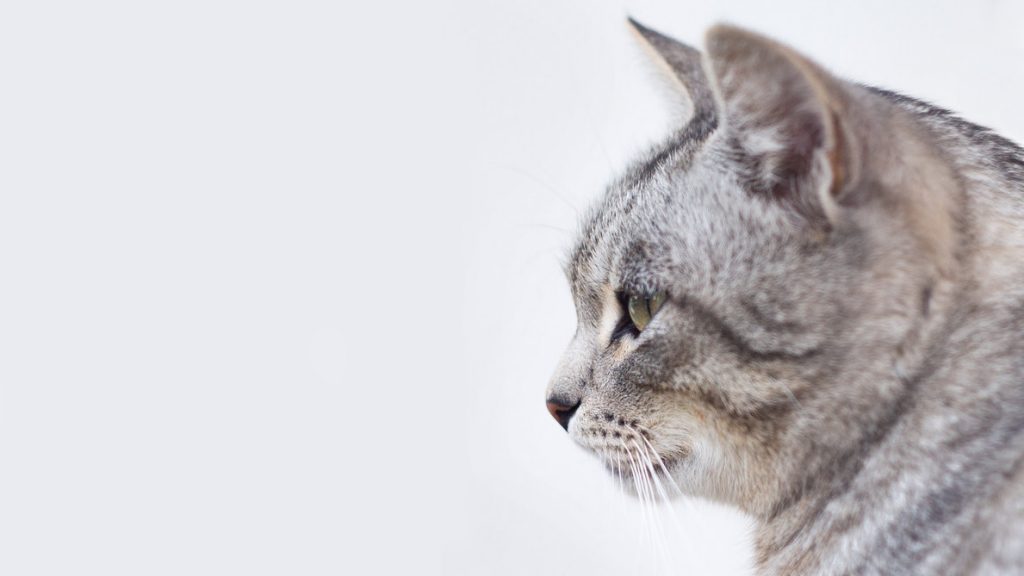
Cats can’t speak human languages and, unfortunately, we don’t have magical powers to read the minds of these adorable agile creatures! But, body language reveals a lot. Want to know what mood your cat is in? We can help you become cat experts in no time! Psych2Go shares with you 7 ways to read your cat’s body language:
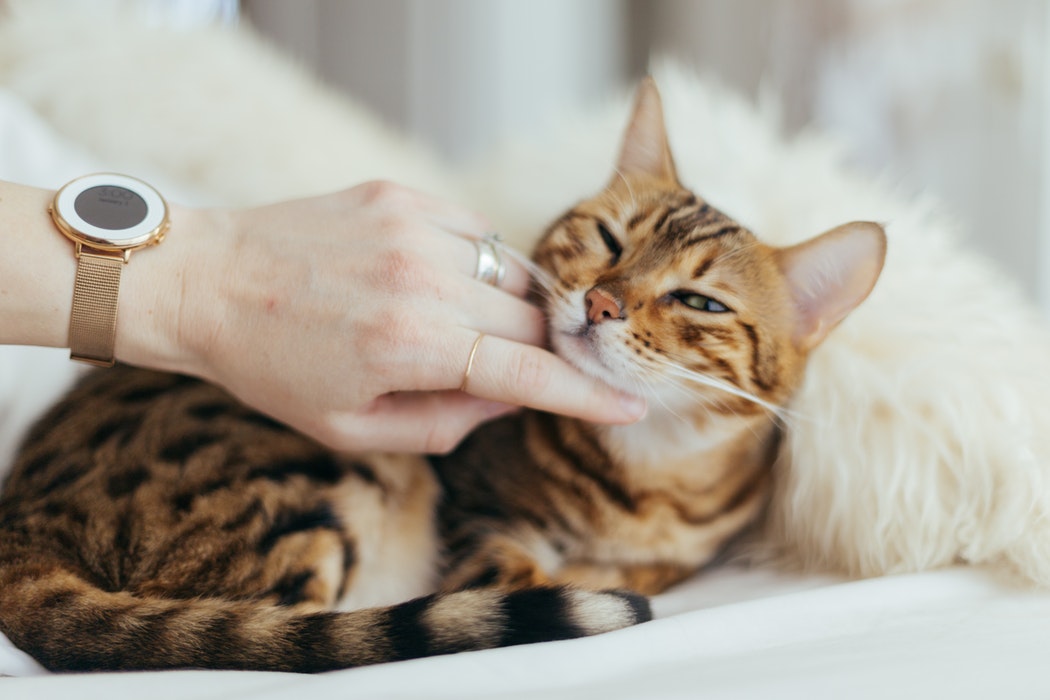
1. Relaxed, neutral, or comfortable
Have you ever ridden a train and felt content looking out the window as you daydream? When a cat is in its relaxed, neutral state, it has the same expression on its face. If your cat is comfortable, you will often find it lying down, stretched out, rolled over, curled up in a ball, or lying on their front with its paws tucked underneath it. Its eyes will either be blinking gently or appear half-closed.
Its ears will be perked in a casual upright and forward manner and may occasionally move around to listen to its surroundings out of curiosity. When a cat is relaxed, it will breathe slowly and deeply and keep its claws safely tucked away. Its whiskers on its face will be less noticeable, but if it’s curious about a new encounter, its whiskers will usually move outwards and become a little more stiff.
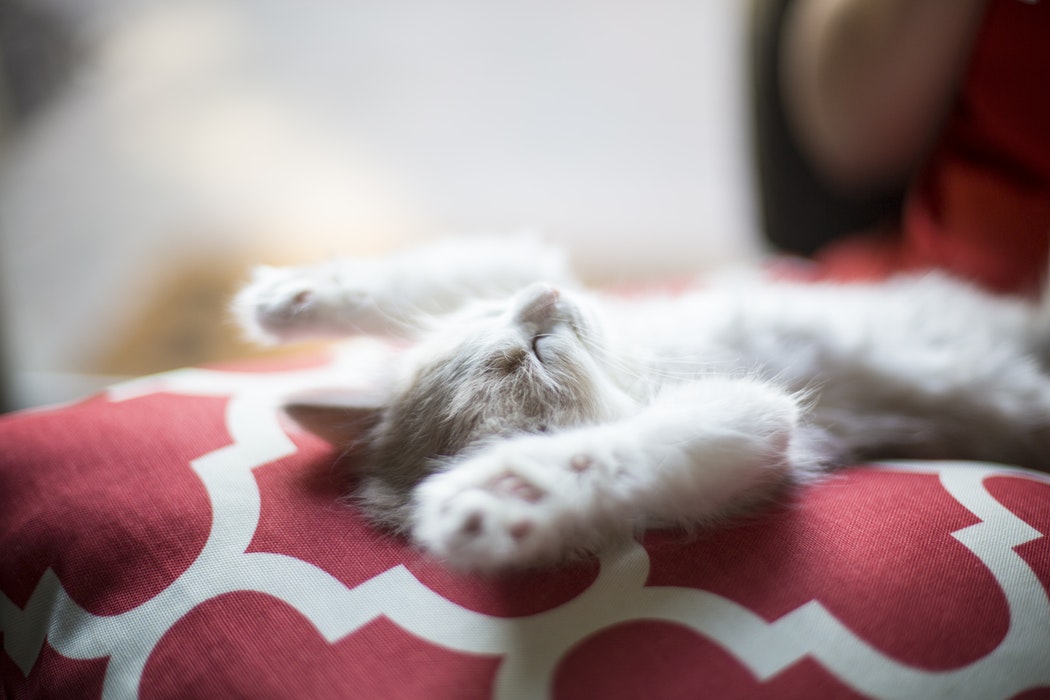
2. Happy
When a cat is happy, it will exhibit similar body language when it’s in a relaxed state, but slightly more amplified. It’s often easy to tell when a cat is happy or affectionate. When your cat recognizes familiar sounds or voices, it will point its ears upright in a relaxed manner and move gently towards those comforting noises. It may also lay on its back with its legs stretched outwards, which is a great indicator! If your cat is standing next to you, observe its tail. If it’s held up high and slightly curled, then your cat is letting you know that it’s happy to see you.
In addition, pay attention to the way your cat blinks. If it gives you slow, relaxed blinks, then that’s its way of being affectionate with you. This is because cats show that they trust you when they close their eyes. If you want to return the love, when your cat stares at you, blink slowly back. This is a trick my boyfriend showed me whenever I pet his cat. Another obvious clue that your cat is happy is when you stroke or pet it and it purrs contently.
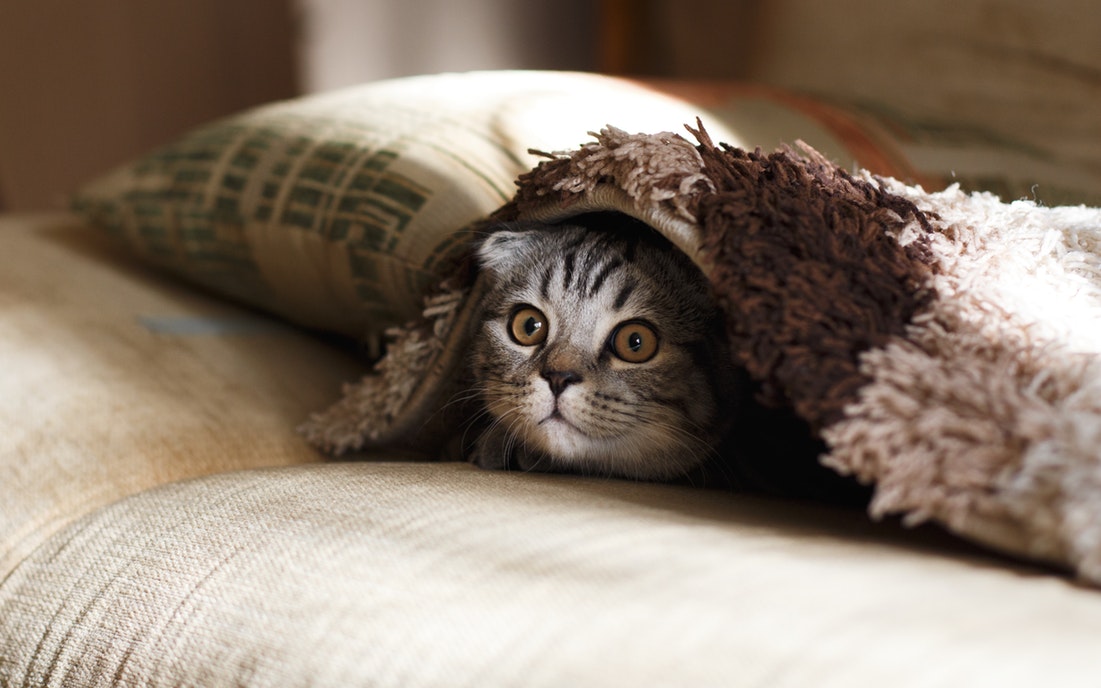
3. Anxious or fearful
Cats are often sensitive to change, so they may take some time to get adjusted to new situations, environments, and faces. My boyfriend’s cat is very much an indoors cat and it took a while for her to get used to me. One way to alleviate your cat’s anxiety is by giving it a few reassuring strokes when it approaches you for comfort and attention.
One sign that your cat is feeling anxious is when its eyes are wide open and appear unblinking with its pupils dilated in an oval or circle shape. If your cat is feeling extremely anxious, its ears may flatten all the way back until they look like they’re sitting on top of its head. It will also lower its head as it cowers or it may do the opposite and arch its back as a signal that it’s prepared to run away from potential danger.
A fearful cat may change the appearance of its size as a way of self-protection. If your cat’s fur fluffs out or you notice excessive shedding, then that may indicate it’s feeling scared. It’s also important to pay attention to your cat’s tail. If its tail is still or moves slowly side to side at the tip, then your cat is feeling anxious.
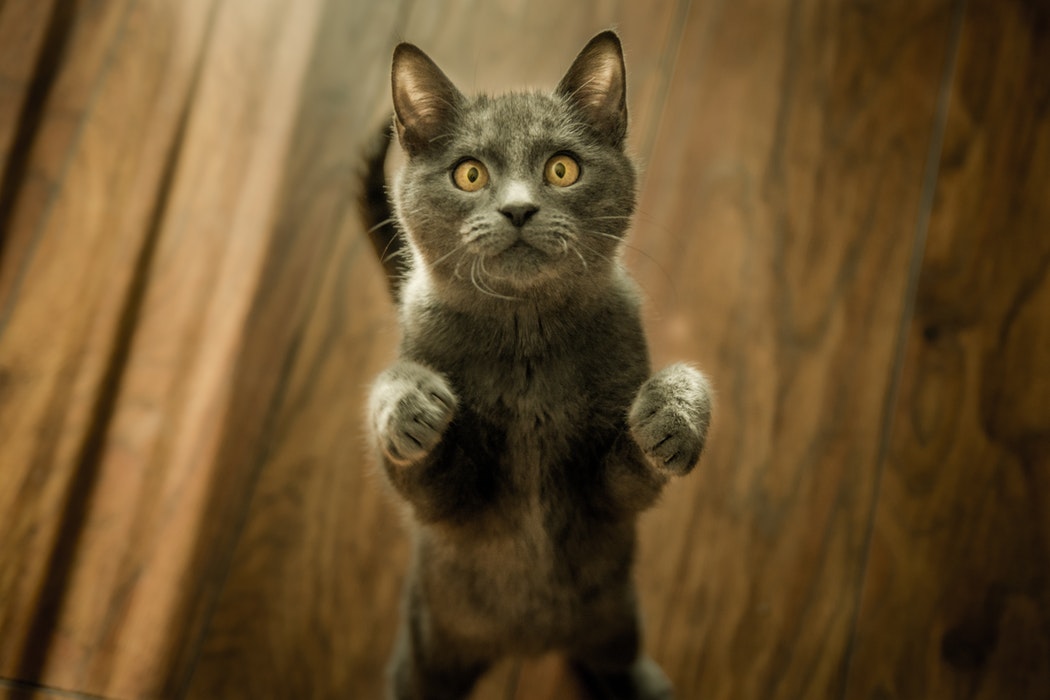
4. Frustrated or sad
A cat may be frustrated or sad when it’s unable to express its need to hunt or if it misses its owner. When your cat is frustrated with an object, such as not getting enough food or unable to grab a toy out of its reach, it will focus its attention intensely on that object. When your cat is focused on a single goal, its eyes will be wide open and dilated, and both its ears and whiskers will perk forward in the direction of its desired object.
Your cat may also pace back and forth impatiently similar to a person in deep thought trying to figure out a solution. If your cat is experiencing long-term depression, it will be less interactive with you and will barely touch its food. Let your cat know that you’re there for it and try to alleviate its frustrations.
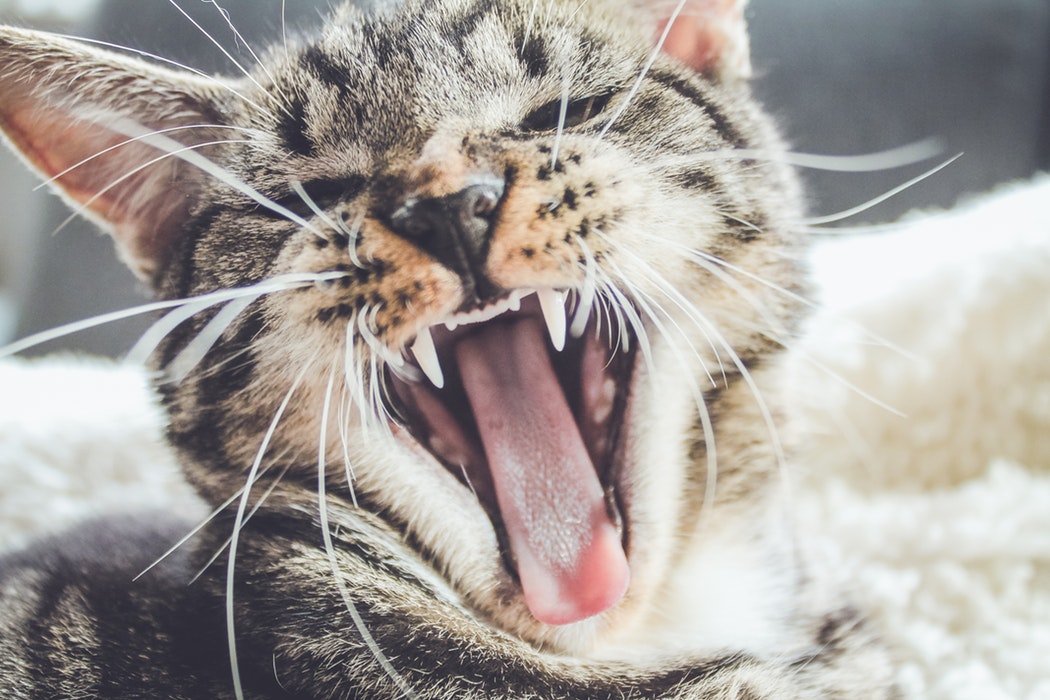
5. Angry
When your cat is angry, it’ll be obvious, so watch out! An angry cat will often be rigid and its tail will either be stiff and straight or curled around its body. It will either be more silent than usual or it’ll hiss or growl at you. Your cat will try to assert its dominance by trying to appear larger than it is by crouching in a manner that makes it look threatening. When this happens, give your cat some space because it clearly doesn’t want to feel anymore agitated than it already is.
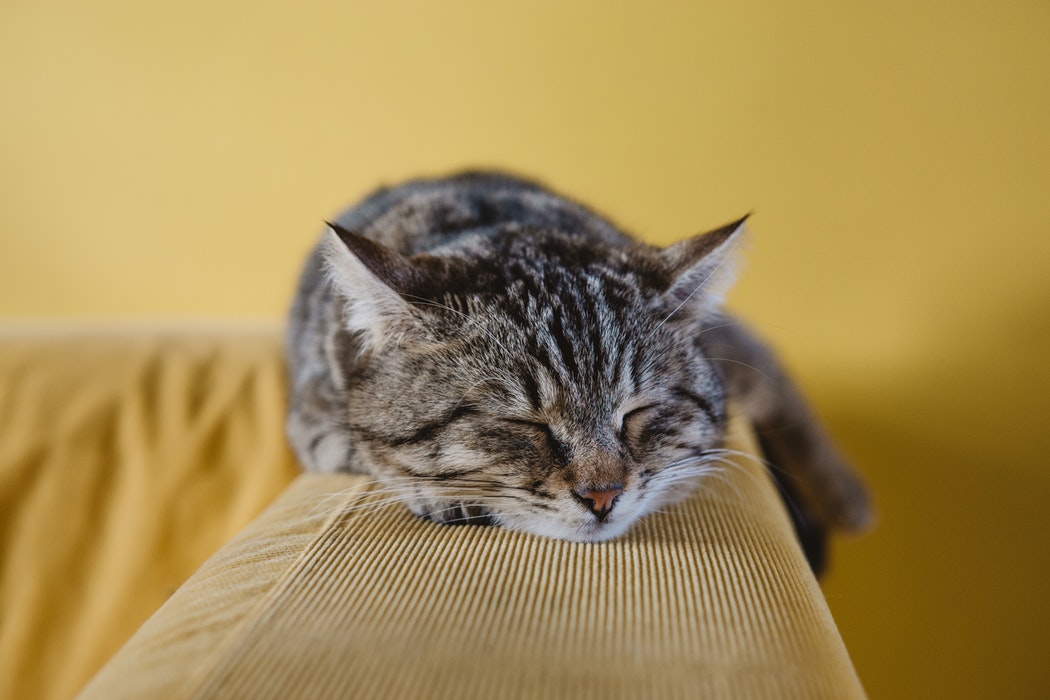
6. Relieved
When your cat is feeling relieved, it may do a full body stretch to show its tension being released. It will usually exhibit the same body language when it’s in a relaxed, calm state. Your cat’s whiskers will position away from its face and its head will lower in a casual manner. Your cat may also yawn, close its eyes halfway, or lick itself clean. These are all good signs that your cat feels at ease.
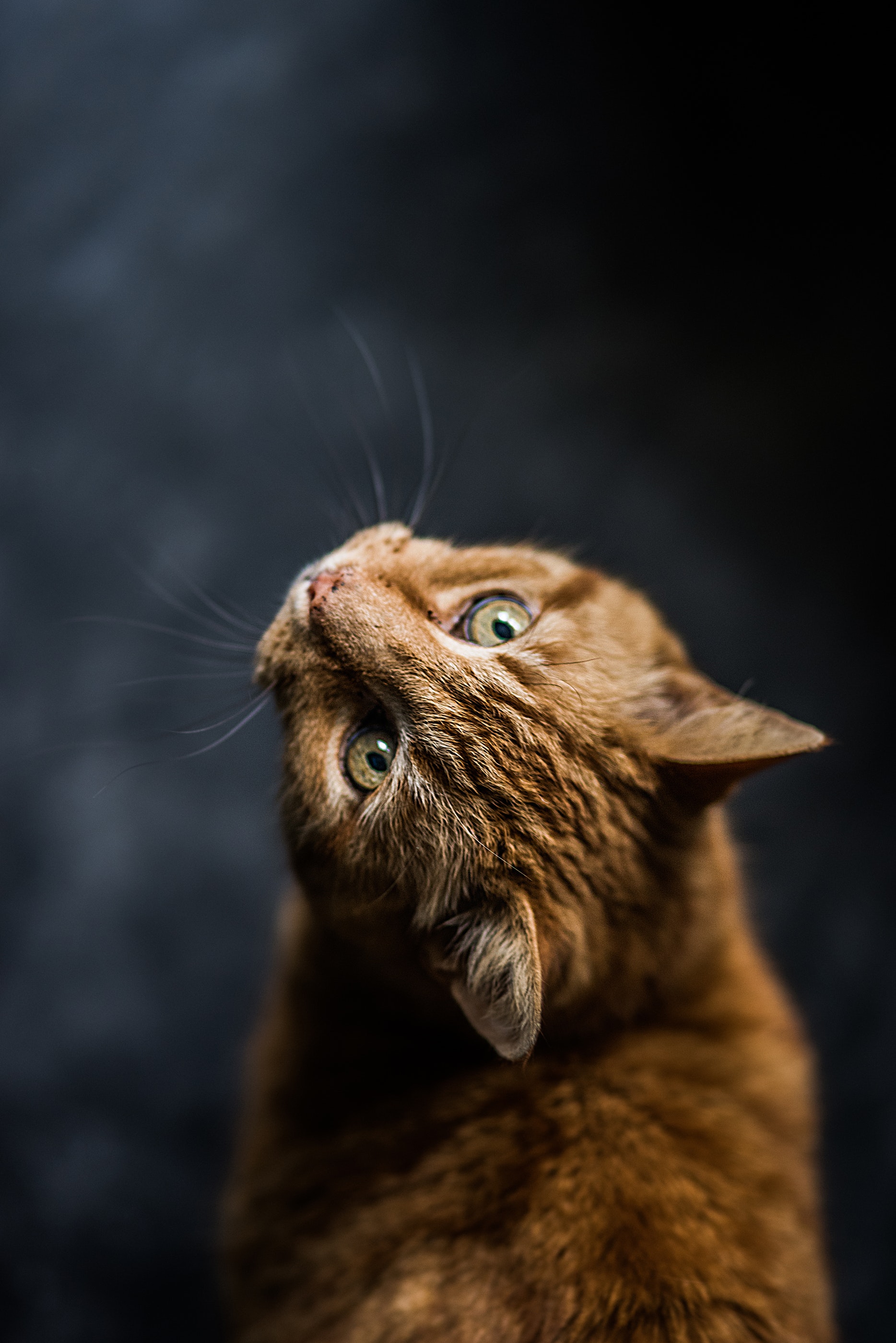
7. “I’m going to get you.”
If you pet or play with your cat too much, it will begin to feel threatened. Cats are naturally predators, so if there’s something in your hand that your cat wants, the best thing to do is freeze in motion. This will interrupt the cat’s stalking pattern. When cats often see something they want that is moving, they won’t hesitate to go after it, whether it’s a mouse, toy, or human hand. Signs that a cat is in its hunting mode is if its tail is low and twitching, its pupils are dilated and focused on the desired object, and its ears are flattened.
What are some ways your cat tries to communicate with you? Psych2Go would love to hear your thoughts! Please be sure to leave a comment down below!
If you enjoyed this article, you may also like 7 Benefits of Owning a Cat from Psych2Go.
References:
Becker, M. (2015, May 12). 5 Keys to Decoding Your Cat’s Body Language. Vet Street . Retrieved December 27, 2017.
Bishko, A. (2011). What Your Cat’s Body Language Is Saying. Web MD. Retrieved December 27, 2017.
Understanding Your Cat’s Behaviour and Body Language. (2017). Purina. Retrieved December 27, 2017.



Hi! It’s very refreshing to see information about animal psychology, particularly cat psychology as cats are known for being subtle with their emotional displays.
I noticed that in point 2, you have missed a couple of signs of affection: when the cat either rubs its head against you (headbutting) or rubs its body against you, both of which are the cat’s way of depositing its scent to mark you as part of its territory. Also, when a cat licks you or starts kneading – the former is a form of social bonding learned as a kitten as kittens will often ‘groom’ eachother. The latter is learned when kittens knead their mothers whilst feeding to stimulate milk, and when an older cat does this, it can mirror the feeling of security associated with the presence of their mother.
In point 4, it may need clarifying as to what you mean by ‘object’ as the examples that follow can be described as situations or events rather than objects.
Finally, I am not sure if this relates to point 5 or point 7, but another sign of a cat feeling threatened is when its tail resembles a bottle-brush, and the fur on its tail (sometimes also its spine) will stand on end. This sometimes accompanies the cat arching its back.
I hope that this was helpful to you. I really enjoyed reading this!